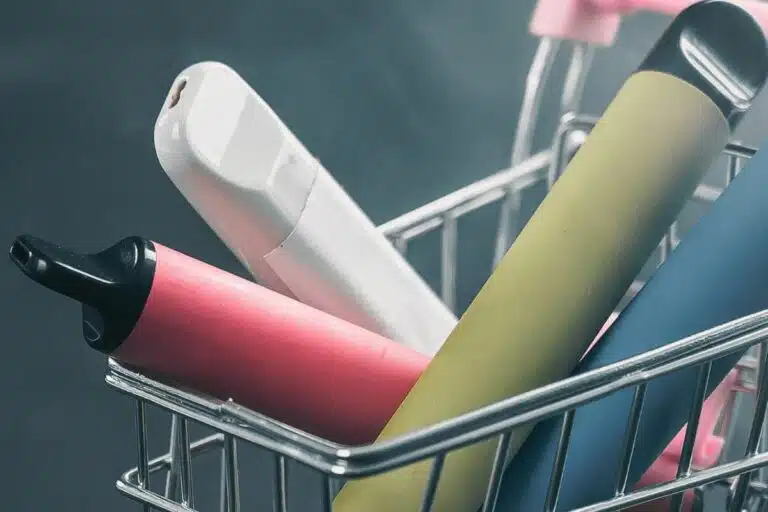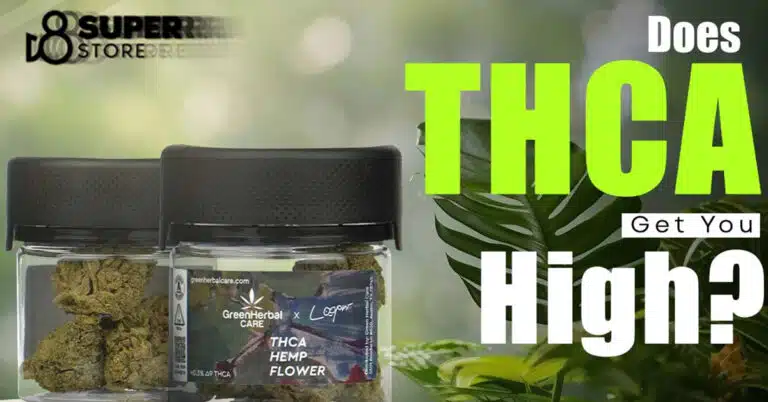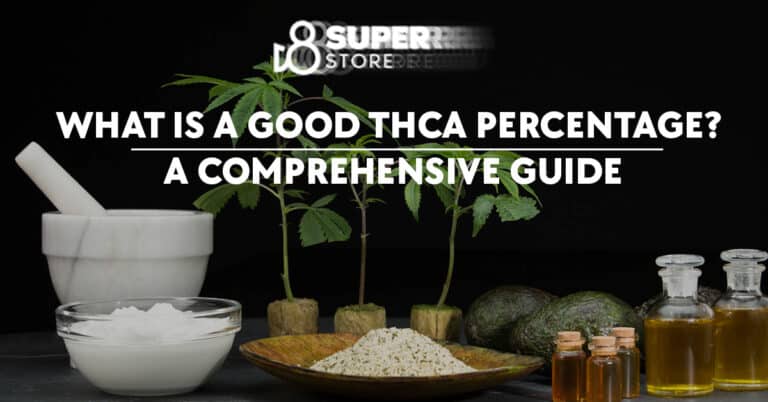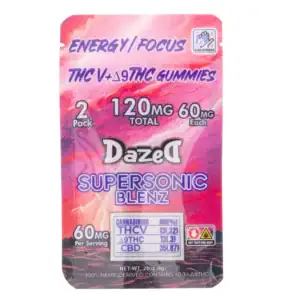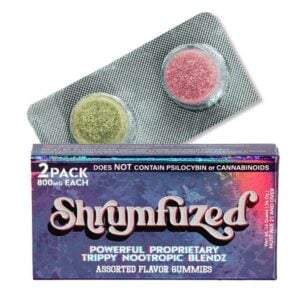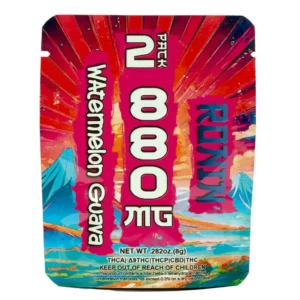What is 99.9% THCa Crystalline: Unveiling the Purest Form of Cannabis Concentrate
Jumping into the realm of THCa crystalline feels like discovering a hidden gem – the absolute purest gem you could stumble upon. Imagine this: THCa sparkles like a diamond, representing the most spotless type of tetrahydrocannabinolic acid accessible. Before transforming into THC, the magical element in weed that sends you soaring, THCa hangs out, totally not fiddling with your mind. When it takes on its crystal shape, you’ve discovered a goldmine with purity almost touching 100% THCa. That’s right, none of that extra stuff like terpenes or different parts of the cannabis plant coming along for the ride. You’re about to dive into something incredibly pure, zeroing in on the highest quality there is. Eager to learn how to make it work wonders for you? You’ve landed in the perfect spot. Stick around, and you’ll uncover how opting for nearly pure THCa can drastically shake up the game for anyone keen to elevate their cannabis experience, sidestepping all the unnecessary additives.
Table of contents
The crystalline structure of THCa is produced through meticulous refinement processes that eliminate all but the THCa compound. Its crystalline form allows for precise dosing given its purity, which is particularly important for those seeking the potential therapeutic benefits without the psychoactive effects. When heated, THCa decarboxylates into THC, and that’s when the psychoactive effects are experienced. Therefore, consumers who seek a potent and pure form of THC often opt for THCa crystalline to ensure they are using a product that delivers a high concentration of the desired compound.
When you come across 99.9% THCa crystalline, it’s worth understanding that this product is geared towards experienced cannabis consumers due to its potency. It’s a versatile product that can be ingested as is or added to food, dabbed, or vaporized. Due to its pure state, the effects of converting THCa to THC through decarboxylation are immediate and intense, which is why it is often chosen by those who have a high tolerance for THC or require a potent dose for their individual needs.
Understanding THCa Crystalline
As a highly purified product from the cannabis plant, 99.9% THCa crystalline represents the zenith of purity and potency in cannabis concentrates. This section will navigate through the details of its properties, purity, and implications for use.
Chemical Composition and Properties
THCa crystalline is the solid, crystal-like substance that is the acid precursor to THC, the primary psychoactive component in cannabis. Unlike THC, THCa in its natural state is not psychoactive.
- Molecular Formula: C22H30O4
- Melting Point: Approx. 220°F (104.4°C)
- Non-Psychoactive (pre-decarboxylation)
Comparison with Other Cannabis Concentrates
The main difference between THCa crystalline and other cannabis concentrates like hash, wax, and shatter lies in its purity level and lack of terpenes.
- Purity: nearly 100% THCa
- Others: commonly range from 60% to 90% THC

Production Process
Production of THCa crystalline involves multiple steps crucial to achieve high purity:
- Extraction: using solvents like hydrocarbon hexane or methanol.
- Purification: via chromatography and rotary evaporator techniques.
- Isolation: resulting in crystalline THCa.
Legal Status and Availability
Legality centers on the content of delta-9 THC, with THCa crystalline being federally legal under the 2018 Farm Bill only if derived from hemp and contains less than 0.3% delta-9 THC by dry weight.
Potency and Purity
THCa crystalline touted as the most potent cannabis product primarily due to its exceptional purity; near 100% THCa content translates to a product virtually free of impurities.
Psychoactive Potential and Decarboxylation
THCa must undergo decarboxylation (a heating process) to convert it to psychoactive THC. Until then, THCa crystalline lacks psychoactive effects.
Pharmacological Benefits and Risks
THCa has been linked to therapeutic effects like reducing nausea and inflammation. However, the high potency poses risks of overconsumption and adverse psychoactive effects after decarboxylation.
Uses and Applications
Consumers can use THCa crystalline to dab, vaporize, or as an additive in edibles. It allows patients and users to achieve high doses of cannabinoids without the plant compounds found in other forms of cannabis.
Consumer Considerations
Users should consider potency and dosage carefully due to the high purity level of THCa crystalline. Purity ensures a clean experience void of unwanted impurities.
Product Varieties and Forms
THCa crystalline is often found as THCa diamonds or fine powder, providing users with a versatile and highly isolated form of THCa, typically free from other cannabis compounds.
Extraction Techniques and Equipment

In the pursuit of producing 99.9% THCa crystalline, you’ll encounter a variety of extraction techniques and equipment each with its own merit in terms of potency and purity. Specifically, your focus on solvent selection and the refinement process will dictate the quality of your final concentrate.
Solvent-Based Extraction
Using solvents is a common technique you might employ to extract cannabinoids to create concentrates such as 99.9% THCa crystalline. In this method, chemical solvents such as butane or acetic acid are used to pull THC, CBD, and other cannabinoids from the plant material. Here’s a breakdown:
- Closed-loop systems are preferred for safety and efficiency, containing the butane so it can be reused.
- Temperature and pressure are controlled to ensure the solvent selectively dissolves the desired compounds.
Solventless Methods
If you’re looking for a method without chemical inputs, solventless methods are your answer. These techniques include:
- Rosin press: employing heat and pressure to squeeze resinous sap from your cannabis.
- Ice water concentrate: using cold water and agitation to separate trichomes. Known as ice hash, this is a precursor to crystalline hash.
Post-Extraction Purification
After extraction, your concentrate contains unwanted materials like fats and lipids. Purification methods are crucial for achieving the high purity required for crystalline forms:
- Filtration: to remove solid impurities.
- Winterization: where you combine the extract with a solvent like ethanol, freeze it, and then filter out the precipitated fats.
- Chromatography: which separates compounds based on their interaction with a stationary phase and a solvent.
Analysis of Extraction Efficiency
To ensure you’re achieving the targeted potency and purity in your concentrate, testing and analysis are essential.
- Analytical equipment: like HPLC (high-performance liquid chromatography) can measure purity.
- Potency tests: can analyze the exact cannabinoid profile and concentration in your extract.
Impact of THCa Crystalline on the Industry
THCa crystalline represents the pinnacle of purity and potency in cannabis concentrates, influencing market trends and industry standards unparalleled by other forms of cannabis products.
Market Trends and Consumer Demand
The cannabis industry has observed a surge in consumer demand for high-purity concentrates, with 99.9% THCa crystalline setting a new precedent. This near-perfect isolation, such as that produced by Guild Extracts, is not only expensive but also revered for its potency and the ability to deliver a clean experience free of impurities.
Innovations in Cannabis Science
Cannabis science has been revolutionized by the introduction of 99.9% THCa crystalline, showcasing the zenith of extraction technology. This innovation underscores the industry’s capability of producing concentrates through an extraction process that maintains a focus on both purity and preserving the therapeutic effects without the psychoactive effects until activation.
Quality Control and Safety Standards
The production of THCa crystalline is subject to stringent safety standards. Its legal adoption sets a high bar for quality control, ensuring a product that is not only potent but also clean—free of solvents and impurities. Adhering to these standards reinforces consumer trust in the industry.
Challenges and Controversies
While the industry grapples with issues such as the legal status of cannabis being federally legal or not, and the high cost of THCa crystalline, the product has become a touchstone for discussions surrounding industry issues—from the need for regulation to established safety standards and the dichotomy between therapeutic effects and psychoactive effects.
Understanding THC and Its Derivatives
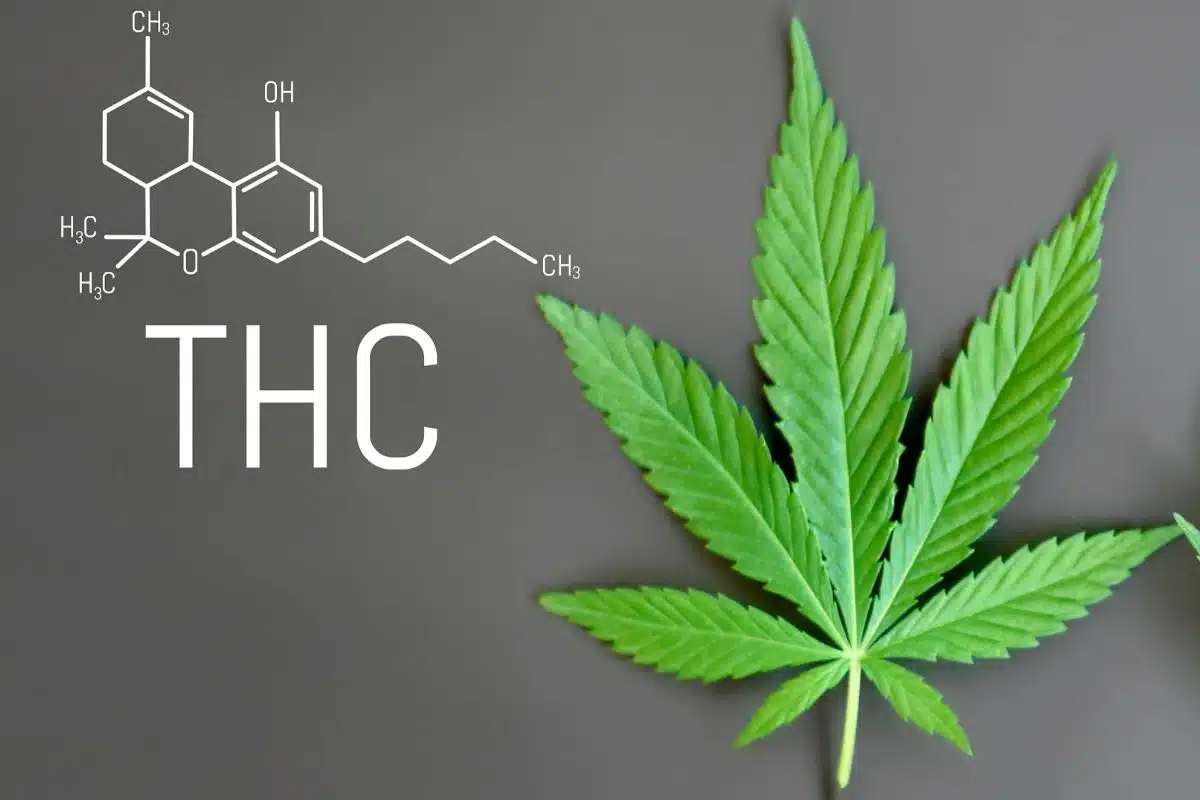
When exploring the world of cannabis, you’ll find that THC stands as the most well-known psychoactive compound, yet it represents just one aspect of the plant’s complex chemistry. Let’s dive into the specifics of THC, its raw precursor THCa, and their distinct roles within the cannabis plant.
Chemical Structure of THC
Tetrahydrocannabinol (THC) is the principal psychoactive constituent of cannabis, responsible for the high that is commonly associated with marijuana. Structurally, THC contains 21 carbon atoms, 30 hydrogen atoms, and 2 oxygen atoms. Its chemical formula is C₂₁H₃₀O₂. The molecular arrangement of THC allows it to bind with cannabinoid receptors in the brain, resulting in its psychoactive effects.
The Role of THCa in the Plant
Before THC comes into play, there is tetrahydrocannabinolic acid (THCa), the non-psychoactive raw acidic form of THC found in the plant. THCa serves as a precursor to THC and possesses its own unique properties and potential benefits. While THCa is not psychoactive, it is a vital component in the biosynthesis of various plant compounds, including THC.
Decarboxylated THC vs. THCa
Decarboxylation is a process that converts THCa into THC through heat and time. When you apply heat to cannabis (like when smoking or vaporizing), THCa loses a carboxyl group and transforms into THC, making it psychoactive. Contrary to THC, THCa is not psychoactive because it does not effectively bind to CB1 receptors in your brain. Understanding this difference is crucial when looking at products like 99.9% THCa crystalline, which require decarboxylation to become psychoactive.
Frequently Asked Questions
In this section, you’ll find detailed answers to some common inquiries about 99.9% THCa crystalline, clarifying its potency, usage, and characteristics.
How potent is 99.9% THCa crystalline compared to other cannabis products?
99.9% THCa crystalline is one of the most pure forms of THCa, a non-psychoactive precursor to THC. When heated, it converts into THC, leading to a very potent effect, far stronger than the average cannabis flower or concentrate that typically exhibits lower purity levels.
What are the common uses and methods for consuming 99.9% THCa crystalline?
The primary use of 99.9% THCa crystalline is for a potent and fast-acting experience. It can be consumed through dabbing, which is a form of vaporization, or added to flower in a smoking device to increase potency.
At what temperature does THCa crystalline typically melt, and why is this important?
THCa crystalline melts at approximately 70°C (158°F). This low melting point is crucial to know for proper vaporization; too high temperatures can degrade the compound, whereas the correct temperature ensures effective and efficient conversion into THC.
What distinguishes THCa crystalline from THCa diamonds, and how are they related?
THCa crystalline is the pure form of THCa, processed to remove most impurities, resulting in a product that is nearly 100% THCa. THCa diamonds, while still very pure, may contain minor amounts of other cannabinoids or terpenes and typically refer to the crystalline structures found in live resin concentrates.
Can 99.9% THCa crystalline lead to the same psychoactive effects as Delta-9-THC when consumed?
Yes, when heated, 99.9% THCa crystalline converts to Delta-9-THC, producing the same psychoactive effects. The conversion results in a substantially potent experience due to the high purity of the product.
What is the price range for purchasing 99.9% THCa crystalline compared to other cannabis concentrates?
The price range for 99.9% THCa crystalline is usually higher than other cannabis concentrates due to its high purity and potency. While prices can vary widely based on regional markets, it’s common to find it priced at a premium compared to less pure concentrate forms.




